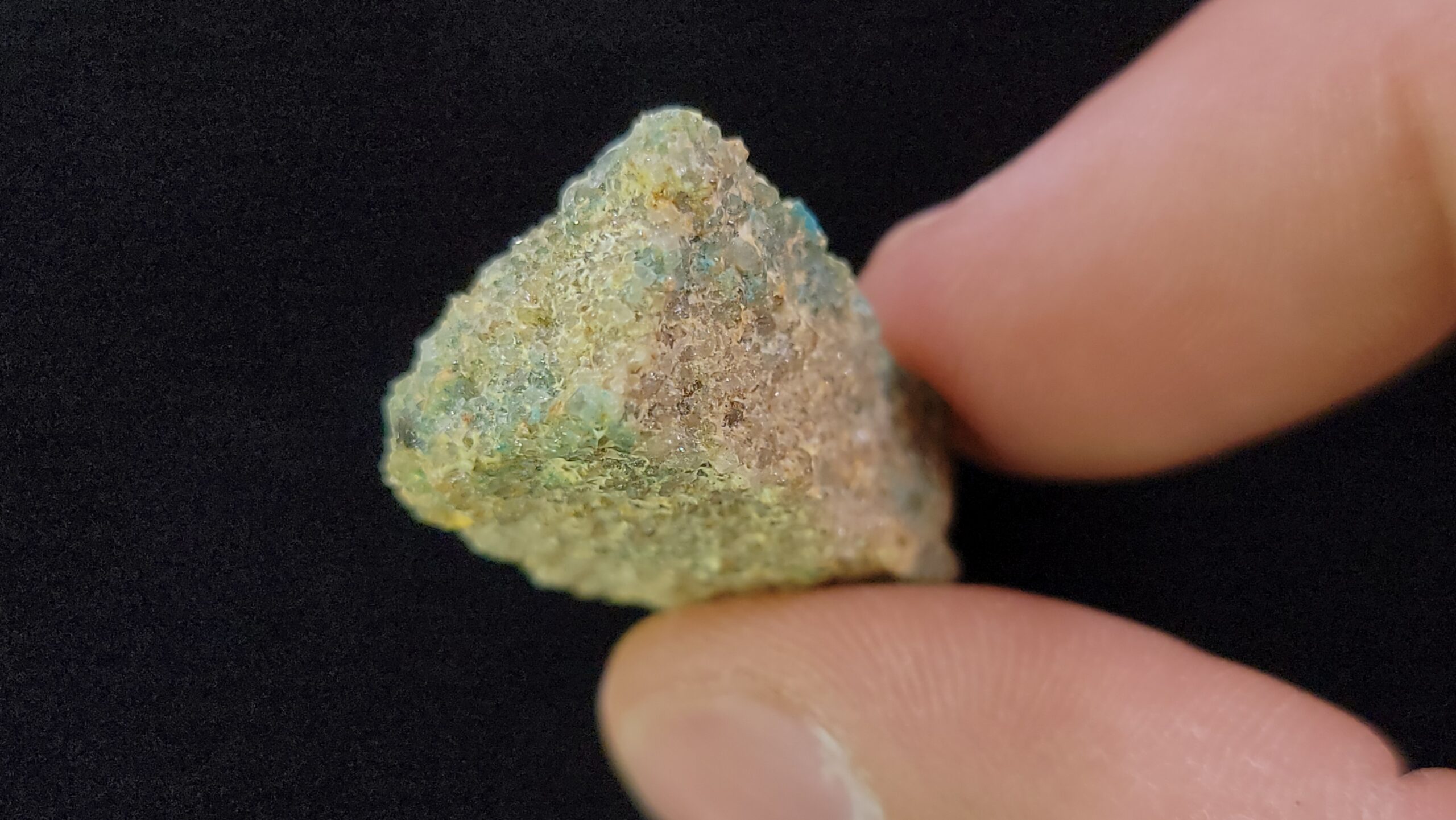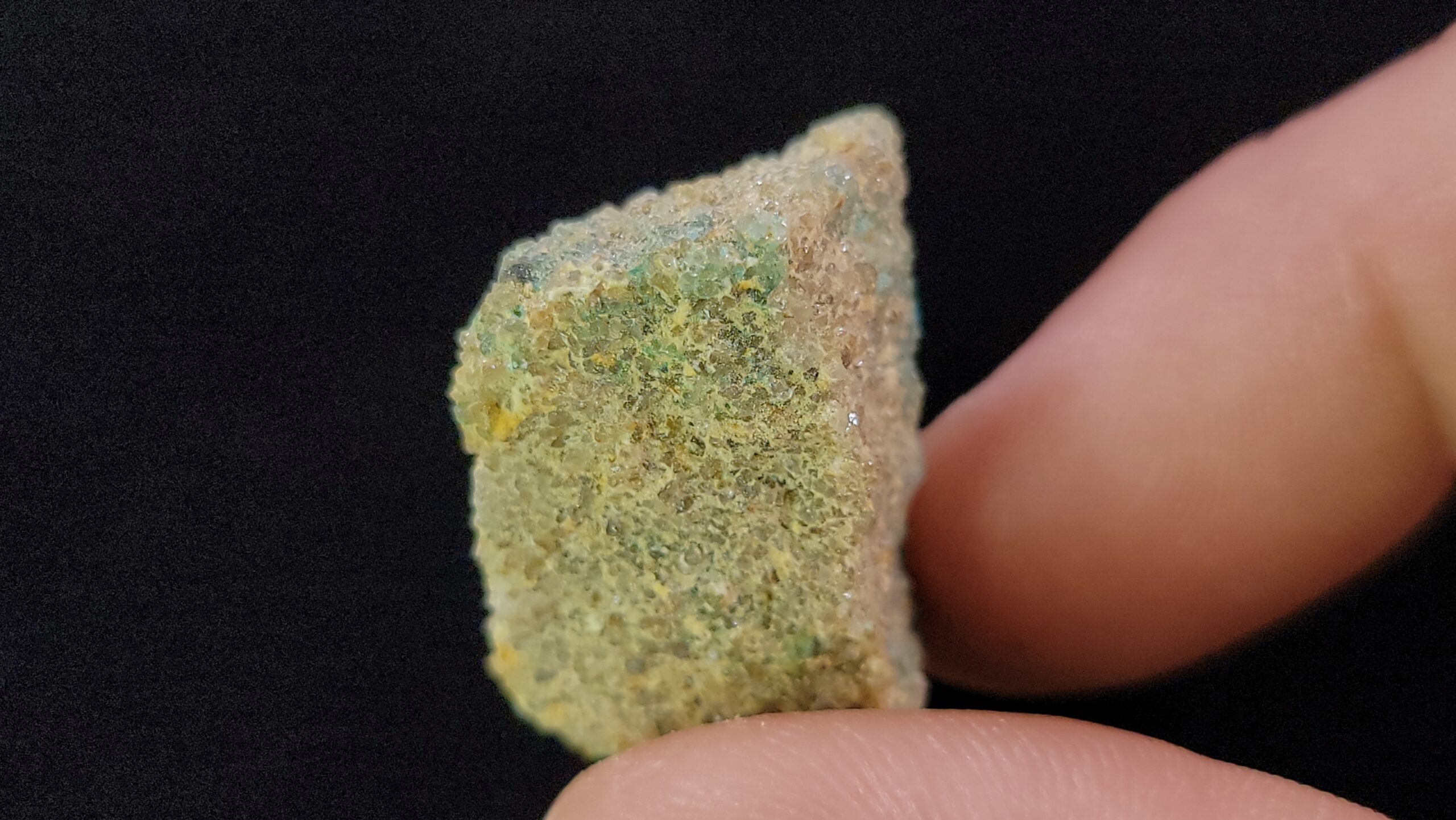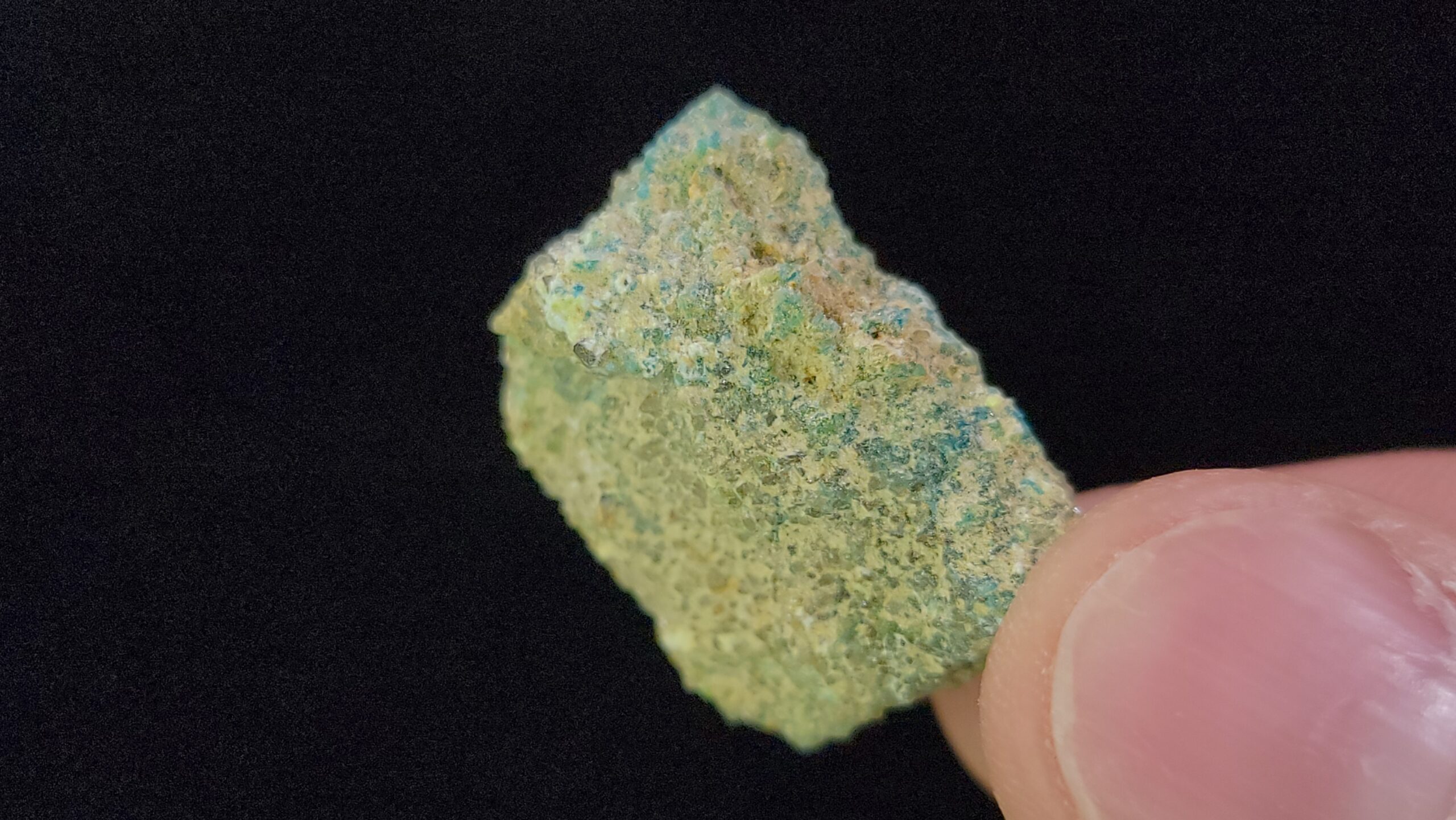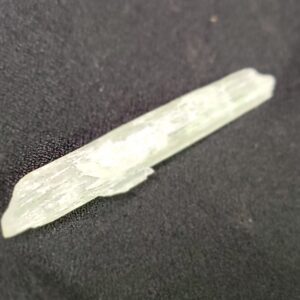Description
Pickeringite has a hardness of 1½ – 2 and a specific gravity of 1.73 – 1.79 and Chalcanthite has a hardness of 2½ and a specific gravity of 2.286. Pickeringite was named by Augustus A. Hayes in 1844 in honor of John Pickering, a linguist, philologist, and President of the American Academy of Sciences. Meanwhile, Chalcanthite gets its name from the Greek chalkos, for “copper” and anthos, for “flower.” You can pretty easily tell the difference between the two, as Pickeringite is the colorless to white mineral within the rock, and the Chalcanthite is the blue.
Assuming this rock is maybe 70/30 on Pickeringite/Chalcanthite by the looks of it, that’d mean that it’s roughly made of around 2% Magnesium, 4% Aluminum, 4% Hydrogen, 7% Copper, 14% Sulfur, and 67% Oxygen, making this a mosaic of a mineral for element collectors.
Pickeringite has been found in around 281 known and recorded localities on most continents across the globe, typically formed by the oxidation of pyrite in aluminous rocks, coal seams, caves, fumaroles and ore veins in arid regions, while Chalcanthite has been found in maybe 1,000 localities, typically near the oxidized zones of copper deposits, also usually in arid regions… So, if you just so happen to be hiking in an arid region which may also contain aluminous rocks and copper deposits, be sure to keep an eye out for minerals like these and you’ll be able to identify Pickeringite and Chalcanthite!















Reviews
There are no reviews yet.